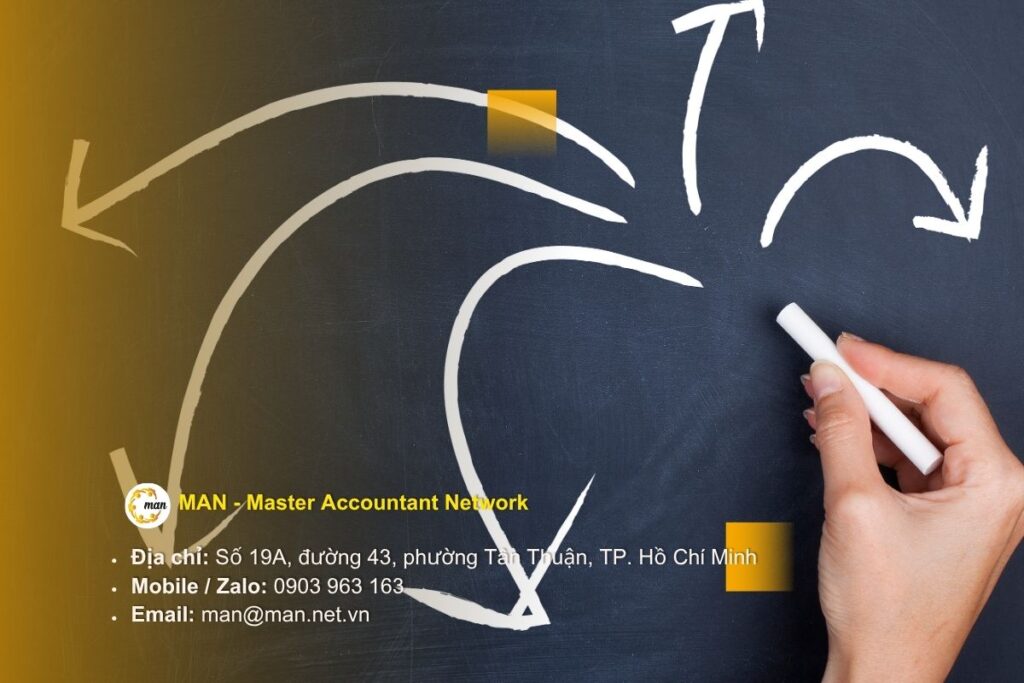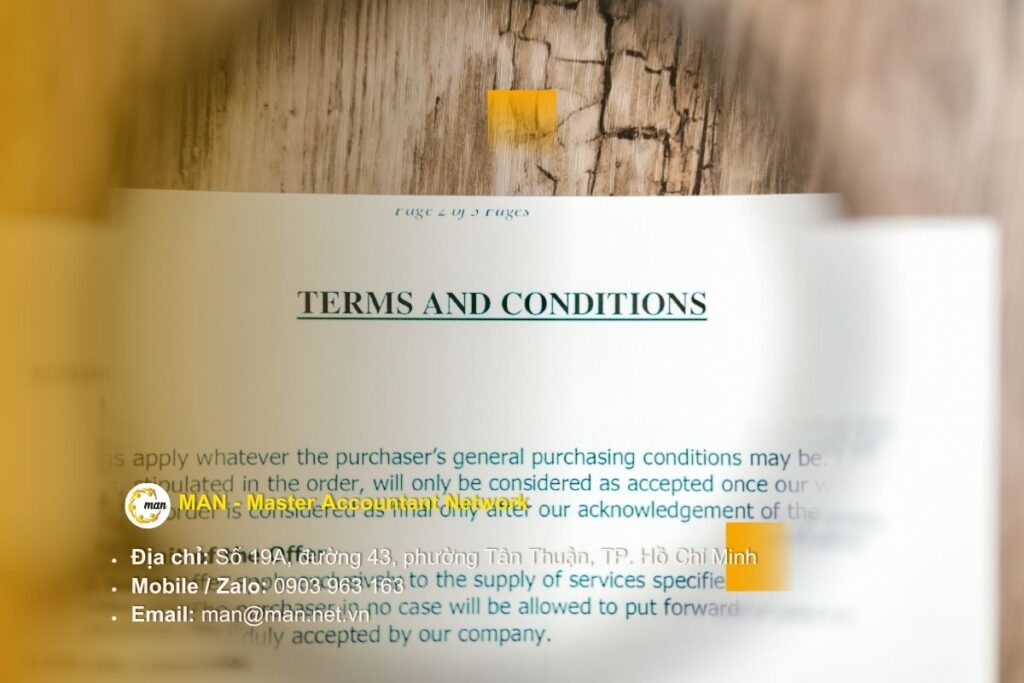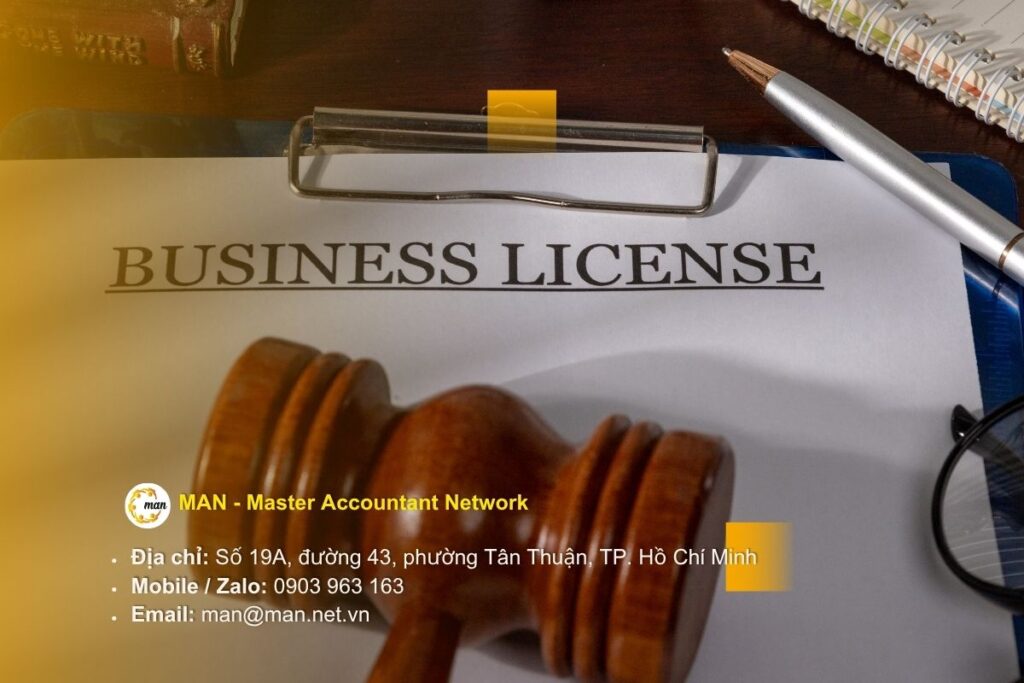Net profit margin in related-party transactions is a method that has become an important indicator to help businesses demonstrate transparency and compliance with market principles. Not only is it a legal requirement under Decree 132/2020/ND-CP and OECD standards, this method is also a "shield" to protect businesses from the risk of tax arrears. So how is the net profit margin in related-party transactions applied, what are the advantages and disadvantages, and what should businesses pay attention to in order to optimize legal profits?
Introduction to net profit margin in related party transactions
Net profit margin in affiliate transactions (Transactional Net Margin Method – TNMM) is becoming the most preferred method in the modern transfer pricing system. According to the latest report from OECD in 2024, more than 65% member countries have applied net profit margin in related-party transactions as the main method to test the reasonableness of transfer pricing in related-party transactions.
In essence, the net profit margin in related-party transactions is a method of comparing the net profit earned by an enterprise from the transaction under examination with the net profit earned from comparable transactions conducted between independent parties in similar circumstances. This method does not directly compare the price of the transaction but instead analyzes the net profit margin relative to a suitable basis such as revenue, expenses or assets.
What makes the transfer pricing ratio important is its broad applicability even when there is no direct price comparison available. In modern business, finding directly comparable price transactions between independent parties is increasingly difficult due to the complexity and uniqueness of many products and services.
Legal basis and regulations on net profit margin in related party transactions
Vietnamese law regulations

In Vietnam, the net profit margin in related-party transactions is officially regulated in Decree 132/2020/ND-CP. According to this regulation, the net profit margin in related-party transactions is determined as one of five standard methods to determine transfer pricing in accordance with the arm's length principle.
According to Article 14 of Decree 132/2020/ND-CP, the method of net profit margin in related-party transactions is clearly stipulated, specifically as follows:
“The method of comparing net profit margin is applied in cases where taxpayers do not have information to apply the method of comparing independent transaction prices; do not have data and information on accounting methods of independent comparables or cannot find comparables with similar functions and products, so there is not enough basis to apply the methods of comparing gross profit margin on revenue or on cost price; taxpayers performing distribution or production functions do not own intangible assets or do not participate in developing, increasing, maintaining, protecting and exploiting intangible assets or do not fall into the case of applying the method of profit allocation between related parties as prescribed in Clause 1, Article 15 of this Decree.”
References: Law Library
With the aim of ensuring that related-party transactions comply with the arm's length principle (market price principle), meaning that the net profit of the enterprise with related-party transactions is not lower or abnormally higher than that of similar independent enterprises.
OECD standards
The OECD Transfer Pricing Guidelines 2022 (updated in 2024) have significantly expanded the scope of application of the net profit margin in related-party transactions. The net profit margin in related-party transactions is recommended to be applied in particular in cases of:
- Complex transactions where finding direct comparables is difficult, businesses with simple functional roles and limited risk, services and uses of intangible assets that are not unique.
- The OECD has added special guidance on the application of net profit margins in related-party transactions in the context of the digital economy, including transactions involving user data, algorithms and artificial intelligence.
Cases of applying the method of comparing net profit margin in related-party transactions
The method of comparing net profit margin in related-party transactions according to Decree 132/2020/ND-CP is applied when:

- Taxpayers do not have the database and information to apply the independent transaction price comparison method.
- Taxpayers cannot compare transactions on a product-by-product basis for similar products. Therefore, the aggregation of transactions is applied to reflect the true nature and practice of business, and to select appropriate profit margins from independent comparables; or
- Taxpayers do not directly exercise autonomy over the entire chain of production and business activities, nor do they participate in specific, synthetic related transactions according to the Profit Allocation Method between related parties.
Decree 132/2020/ND-CP also provides guidance on specific cases of applying the method of comparing net profit margins in related-party transactions, specifically:
- Taxpayers do not have information to apply the independent transaction price comparison method;
- Unavailability of data and information on accounting methods of independent comparables, or failure to identify comparables with similar functions and products, leads to a lack of basis for applying methods of comparing gross profit margins on revenue or on cost of goods sold.
- Taxpayers only perform distribution or production functions but do not own intangible assets, do not participate in the development, increase, maintenance, protection or exploitation of intangible assets, and are not subject to the method of profit allocation between related parties.
Once you have identified the appropriate cases for applying the TNMM method, another important step is to compare it with other pricing methods. The comparison will help businesses clearly identify the advantages, limitations and scope of application, thereby choosing the optimal approach for each specific transaction.
Comparison of net profit margin method in related party transactions with other methods
In practice, the net profit margin method in related-party transactions is not always the only optimal choice. Enterprises need to consider comparing the net profit margin method in related-party transactions with other methods according to the guidance of OECD and Decree 132/2020/ND-CP to choose the most suitable solution. Below is a comparison table of the net profit margin method in related-party transactions with popular transfer pricing methods, helping to clarify the advantages, limitations and application situations.
Board: Compare the net profit margin method in related party transactions with popular pricing methods.
| Method | How to determine | When applicable | Advantage | Limit |
| Unique Comparison Price (CUP) | Directly compare the price of the related-party transaction with the price of the independent transaction | When there is transparent market price data | Most accurate | Difficult to apply in the absence of independent price data |
| Resale Price (RPM) | Compare resale price minus reasonable profit margin | When the business is a pure distributor | Suitable for goods distribution | Not suitable if the business participates in many functions |
| Cost per Minute (CPM) | Compare production costs plus profit margins | When the business is a contract manufacturer | Easy to calculate from internal costs | Difficult to adjust for cost differences |
| Net profit margin in related party transactions (TNMM) | Compare net profit (EBITDA/Operating Profit) with revenue, assets, or expenses | When there is no direct price data but there is financial data to compare returns | Flexible, easy to find data and widely applicable | Accuracy depends on comparative data. Difficult to adjust for economic differences. |
| Profit Distribution Metric (PSM) | Allocation of consolidated profit by function, assets, risks | When parties jointly contribute intangible assets, the risk is high. | Fairness in the distribution of value added | Very complex and requires a lot of detailed data |
Through the comparison table above, it can be seen that each method of determining the price of related-party transactions has its own advantages and limitations. In particular, the net profit margin method in related-party transactions (TNMM) stands out thanks to its flexibility and wide applicability when independent price data is scarce. However, enterprises should not consider the net profit margin method in related-party transactions as the default choice, but should consider combining it with other methods in each specific situation to both comply with OECD regulations and Decree 132/2020/ND-CP and optimize tax administration efficiency.
Principles of applying the net profit margin method in related party transactions

To help businesses easily visualize and apply effectively, below is a summary table of core principles when implementing the net profit margin method in related-party transactions.
Board: Summary of core principles when implementing the net profit margin method in related party transactions
| Principle | Detailed content |
| No independent price data | The method is only applicable when no similar independent transactions can be found to compare prices. |
| There is net profit comparison data | Use net profit of independent enterprises in the same industry and function, taken from public financial reports or commercial databases. |
| Choosing the right party to participate in related-party transactions | Choose the side with simple functions, few intangible assets, transparent data |
| Consistent Profitability Index | NPM for distribution. ROA for contract manufacturing. Berry Ratio for service, pure distribution. |
| Reasonable difference adjustment | Eliminate outliers, adjust costs or rates when there are large differences. |
Through the above table, it can be seen that applying the net profit margin method in related-party transactions requires enterprises not only to have a firm grasp of the legal framework but also to follow the correct procedures from selecting the appropriate party to participate in the related-party transaction, choosing the profit index to adjusting data and comparing with independent enterprises. Strictly following these principles will help enterprises build a transparent related-party transaction profile, reduce the risk of being overcharged and enhance their reputation in international financial management.
Net profit margin ratios in related party transactions
Common indicators often used in analyzing net profit margin in related transactions:
- Net profit margin on sales (NPM) = (Operating profit / sales) x 100%
- Return on total assets (ROA) = (Operating profit / total assets) x 100%
Procedure for performing comparative analysis
To apply the net profit margin method in related-party transactions systematically and accurately, enterprises need to follow the process from identifying transactions to analyzing data and adjusting comparisons. The basic steps are presented in the table below.
Board: Procedure for applying the net profit margin method in related party transactions.
| Step | Main content | Detail |
| Step 1: Identify the transaction to be audited | Clearly identify the transaction to be analyzed | The nature of the goods, services, terms, duration, parties involved and relationship. FAR (Function – Asset – Risk) analysis to determine the audited party and appropriate net profit ratio |
| Step 2: Select the party to be inspected | Choose the side with simple functions and low risk | Principle: easy to find comparative data, less complicated. According to OECD, usually: the processor, the distributor of insignificant brand, the provider of support services, the user of intangible assets owned by others |
| Step 3: Collect and analyze comparative data | Find internal and external data | Internal data: dealing with independent parties in similar circumstances. External data: independent company financial reports, databases (Orbis, Amadeus), industry research. |
| Step 4: Apply comparison adjustments | Adjust data to increase similarity | Accounting adjustment: standardizing the basis of calculation. Time adjustment: reflects market fluctuations. Risk adjustment: eliminating differences in risk levels |
| Step 5: Determine the arm's length | Final result of the analysis | Determine the arm's length based on the quartile range (Q1 – Q3). Remove outliers. Apply statistical methods to increase reliability. |
Fully complying with the above steps not only ensures that the process of determining net profit margin in related-party transactions is carried out objectively and transparently, but also helps businesses limit tax risks and improve compliance with international standards.
Risks of misapplying the net profit margin method in related party transactions
Although the net profit margin method in related-party transactions is considered the most flexible and popular today, its application is not without many challenges. If businesses do not comply with OECD regulations and standards, the risk of being taxed, collected or having their reputation affected is very high. To clarify, below is a summary table of the main risks when applying the net profit margin method in related-party transactions.
Board: Summary of risks of net profit margin method
| Risk group | Content |
| Legal and Tax | Tax authorities have the right to determine and adjust taxable income if they conclude that the enterprise's price determination is not appropriate arm's-length. Subject to corporate income tax arrears and administrative fines (according to Decree 125/2020/ND-CP). Late payment fees and fines arise in addition to the tax collected. Serious case: Risk of criminal prosecution for tax evasion. |
| Finance - Accounting | Impact on financial statements Cash flow pressure High compliance costs |
| Management and reputation | Loss of reputation with tax authorities, partners, investors. Increased risk of testing in the next period. Risk of brand damage if dispute becomes public. |
| Supply chain and customs | Differences between internal prices and customs declarations can cause disputes, import tax or value added tax collection. |
| Multilateral risks | Risk of double taxation when related parties in 2 countries do not synchronize adjustments. A bilateral agreement or double taxation avoidance agreement is required for processing. |
To limit potential risks, businesses need to proactively build transparent transfer pricing profiles to protect their interests before tax authorities. Let's join MAN - Master Accountant Network to learn about solutions to minimize risks when applying the net profit margin method in related-party transactions.
Solutions to minimize risks when applying the net profit margin method in related party transactions
In order to minimize the risks mentioned when applying the net profit margin method in related-party transactions, enterprises need to proactively develop a comprehensive compliance management strategy. This not only helps to limit the risk of being taxed and collected, but also enhances the reputation with management agencies and investors. Below is a detailed solution table for each risk group, helping enterprises have a clear direction in the implementation process.
Board: Solutions to minimize risks when applying the net profit margin method in related party transactions
| Risk group | Implementation solution | Benefit |
| Legal and Tax | Prepare complete transfer pricing documents according to Decree 132/2020/ND-CP. Regularly update tax regulations and guidance circulars. Consider applying APA (Advance Pricing Agreement) to agree on the advance calculation method with the tax authorities. | Reduce the risk of tax assessment, limit collection and administrative fines. |
| Finance - Accounting | Conduct periodic internal reviews of accounting data and profit margins. Adjust internal prices according to market fluctuations. Diversify capital sources, avoid dependence on borrowing costs from related parties. | Maintain financial stability, ensure cash flow and limit unusual fluctuations |
| Management and reputation | Set up an internal tax management department or hire an independent consultant. Transparent transactions with shareholders and partners. Conduct periodic risk management reporting. | Increase the confidence of tax authorities, partners and investors |
| Supply chain and customs | Ensure customs declaration data is consistent with related transaction records. Proactively discuss pricing policies with customs authorities in advance. | Limit disputes on value added tax, import and export tax, ensure quick customs clearance. |
| Multilateral risks | Proactively review double taxation agreements (DTAs) that Vietnam has signed. When double taxation occurs, proactively negotiate bilateral agreements | Avoid double taxation and protect cross-border interests. |
Applying the net profit margin method in related-party transactions requires enterprises to build a comprehensive tax management strategy. When synchronously implementing legal, financial, administrative and international cooperation solutions, enterprises not only minimize the risk of being overpaid and taxed twice, but also strengthen their reputation and enhance transparency in cross-border financial management. This is the foundation for enterprises to develop sustainably and be more proactive in the globalized business environment.
Thus, from the principles of application, implementation process to risks and solutions, it can be seen that the net profit margin method in related-party transactions (TNMM) is both an effective tool to ensure compliance with regulations and an important measure in international financial management.
Conclude
The net profit margin in related-party transactions (TNMM) is a widely used method due to its flexibility and applicability in many situations where independent price data is scarce. However, implementing the net profit margin method in related-party transactions requires enterprises not only to master the OECD principles and Decree 132/2020/ND-CP, but also to build transparent records, control comparative data and proactively respond to cross-border tax risks.
Applying the net profit margin method in related-party transactions is not only a compliance requirement, but also an opportunity for businesses to improve their financial management capacity. Proactively finding solutions today will help businesses be more stable in the future.
Please contact MAN – Master Accounting Network immediately for advice and support.
Contact information MAN – Master Accounting Network
Address: No. 19A, Street 43, Tan Thuan Ward, Ho Chi Minh City
- Mobile / Zalo: 0903 963 163 – 0903 428 622
- E-mail: man@man.net.vn
Editorial Board: MAN – Master Accountant Network




